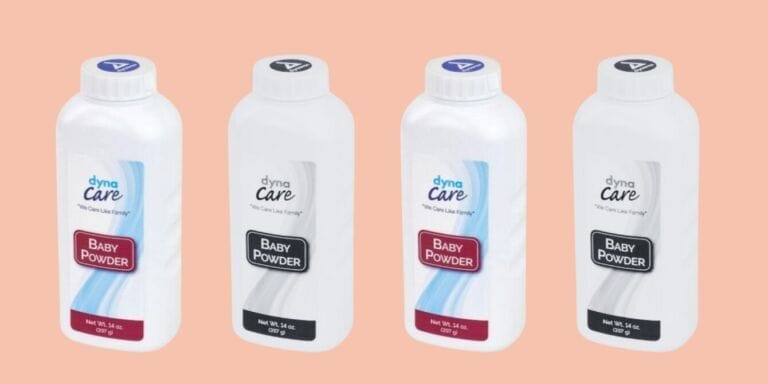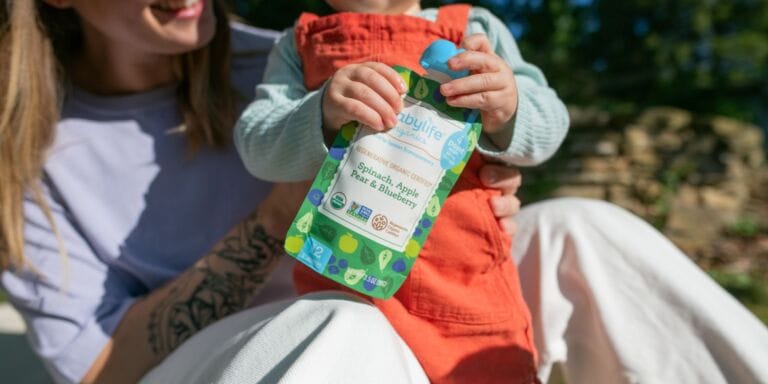What parents need to know about ‘dry drowning’ & infant water safety

2. Designate an official “water watcher.”
This post was originally published on July 20, 2016. It has been updated.
Table of Contents
- 1. Know what drowning looks like
- 2. Be aware of "dry drowning" or secondary drowning, but don't stress over it
- 3. Know that you are your family's best lifeguard
- 4. Designate a water watcher
- 5. Use an approved flotation device
- 6. Slather on the sunblock
- 7. Baby swim classes are fun, but not a guarantee
- A note from Motherly
As you pack your beach bag, you may be contemplating how to keep your tiny tot (and the whole family) safe by the water this summer. Worry not! We have the information you need to maximize infant water safety at the pool, lake, or beach this sunny season, as well as what you need to know about dry drowning.
Here are 7 expert tips to keep your family safe this summer:
1. Know what drowning looks like
When we think of someone drowning, we might picture flailing arms and screams for help. In reality, a young child experiencing trouble in the water may look quite different, and be very quiet.
They may appear to be dog paddling, have their eyes wide open or shut tightly, and have their head tilted back and mouth wide open.
Drowning is the leading cause of death among children 1 to 4 years old, and it can happen very quickly and silently.
Parents should always be within an arm’s reach of little ones when around water, and if you have a pool or plan to visit someone who does, ensure you’re following pool safety tips.
2. Be aware of “dry drowning” or secondary drowning, but don’t stress over it
There’s a lot of talk about dry drowning or secondary drowning, (children becoming unable to breathe due to water in their lungs hours after they’ve been in the water) but keep in mind that only 1% to 2% of drownings are dry or secondary, and mild symptoms usually improve with time.
It is much, much less common or dangerous than instantaneous drowning.
Editor's Note
“Dry drowning” is not a medical term, and in a review published in the Cleveland Clinic Journal of Medicine, doctors stress the importance of not propagating misinformation about “dry” and “secondary” drowning, because it diverts attention from the real problem, which is children drowning in bodies of water.
As Dr. Peter Wernicki, a member of the American Red Cross Scientific Advisory Council told the Chicago Tribune, “Everyone needs to calm down… This whole thing has totally been over-hyped by social media and people who are not knowledgeable on the subject.”
If, hours after swimming or playing in water, your child starts coughing, exhibiting unusual levels of fatigue, chest pain, or trouble breathing, do seek medical help.
3. Know that you are your family’s best lifeguard
If you’re at a beach or a pool with professional lifeguards, you might feel a sense of security, but no one knows your child’s aquatic capabilities like you as their parent.
Plus, while lifeguards are trying to keep an eye on everyone in the water, you can focus solely on your family’s safety. Think of lifeguards as a second line of defense.
Related: A drowning investigator’s plea to parents about water safety goes viral
4. Designate a water watcher
Whether it’s a backyard BBQ around the pool or a family reunion at the lake, things can get super busy when everyone is having fun in the water. That’s why many safety resources, such as The Red Cross and the YMCA, recommend designating one adult at a time as a dedicated poolside water watcher.
Some resources even provide badges to make it official. Wear a water watcher lanyard or even a simple wristband to designate an official water watcher.
Take turns with the other trusted adults so that you don’t get tired and still have plenty of time to relax during the day. On your “shift,” put your phone away, avoid getting distracted by socializing, and don’t leave the water area without a replacement.
Consider the concept of “touch supervision,” in which the water watcher remains within arm’s reach of little swimmers at all times.
5. Use an approved flotation device
If you choose to use a flotation device to provide an additional layer of safety for your tot, make sure it is approved by the U.S. Coast Guard.
Although flotation toys, like Puddle Jumpers, water wings and inflatable baby floats, can be an enjoyable way interact with your tot in the pool, they can’t take the place of a life preserver, life jacket or the guiding hands of a supervising adult.
Related: Are Puddle Jumpers safe in the pool? What parents and caregivers need to know
6. Slather on the sunblock
The American Academy of Dermatology recommends applying sunscreen approximately 15 minutes before sun exposure to allow skin to absorb the product.
Stick with a minimum of SPF 30 and be sure the sunscreen provides both UVA and UVB protection.
Many individuals do not use enough sunblock, so feel free to apply liberally. The amount that fits in your palm should be enough to cover yourself (or baby) from head to toe.
Pro tip: Swim shorts, shirts, suits, and wide-brimmed hats with built-in SPF means you shouldn’t need to be reapply sunscreen every 2 hours as you would if you weren’t wearing those protective layers.
Related: 15 places to buy matching family swimsuits
7. Baby swim classes are fun, but not a guarantee
It’s not a necessity, but infant swim lessons can provide your little one with elementary experience in the water and provide you with the knowledge you need to keep your baby water safe.
Whether you choose an infant self-rescue course or a weekly infant course to simply make your little one feel a bit more comfortable in the water, it’s important to remember that no data has sufficiently shown whether infant aquatic courses decrease the risk of drowning. This could be because parents and children feel more comfortable in the water—but infants aren’t ready to be left on their own.
Related: Infant swimming resource lessons could save your baby’s life
According to the AAP, parents should not feel secure that their child is safe in water or safe from drowning after participation in any aquatic programs at this early of an age.
When it comes to swimming lessons, it’s important to make sure that you feel comfortable in the water, too! It’s never too late to take a class to improve your swimming skills and confidence, mama.
A note from Motherly
The bottom line? Water play can be safe and fun at the same time. Take care to supervise little ones anywhere there’s water nearby. Stay safe and happy swimming.





































